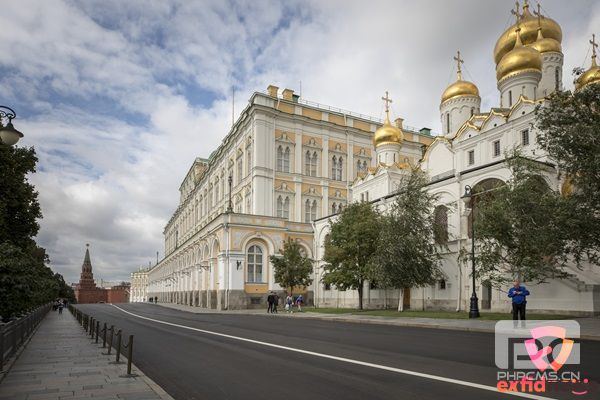A recent study suggests that global warming could unveil an ancient river landscape preserved beneath the East Antarctic Ice Sheet for millions of years. While the vast ice retreat on the continent has yet to expose this ancient landscape, future climate warming could potentially bring about this change.
The research, published in Nature Communications, was led by Stewart Jamieson, a researcher at Durham University in the United Kingdom, who specializes in ice sheet behavior, long-term trends, and landscape evolution. Jamieson pointed out that ice has been a dominant feature in Antarctica for approximately 34 million years. However, before this ice-covered era, Antarctica enjoyed a comparatively warm climate, similar to today's southern South America, particularly regions such as Patagonia in Argentina and Chile. Jamieson noted that there is evidence of past tropical vegetation, including palm trees, in Antarctica.
Recent scientific exploration has unveiled a large river-carved landscape beneath Antarctica, dating back to a time when the continent's climate resembled the present-day southern South America. This landscape is situated in the Aurora-Schmidt basins, inland of the Denman and Totten glaciers. The river that shaped this landscape is believed to have flowed from the continent's center towards the coast between 34 and 60 million years ago. During this period, continents such as Australia and India were gradually moving away from Antarctica and the Gondwana supercontinent.
This buried landscape, estimated to have been concealed beneath the ice for anywhere from 14 million to 34 million years, was discovered using satellite data and ice-penetrating radar. Before this method's development, researchers had significant knowledge of the topography underneath the ice sheet. They had used radar-equipped planes to gather data about the landscape. However, these planes could not cover all areas, leaving gaps in their measurements.
The landscape consists of three river-carved upland blocks separated by deep troughs, located only about 217 miles from the edge of the ice sheet. These features took shape before the region was glaciated, as rivers ran across the landscape to a coastline that formed during the Gondwana supercontinent's breakup.
Following the initial stages of cooling in Antarctica, small glaciers began to form in the river valleys. However, a major cooling event occurred, leading to the expansion of the East Antarctic Ice Sheet, which eventually covered the entire continent. This ice sheet buried the ancient river landscape, essentially preserving it in time.
The process of the Gondwana supercontinent's separation also led to the formation of valleys between the upland blocks before they became glaciated, according to the researchers.
These findings imply that the ice over this region remained largely stable for millions of years, even during periods of warmer climate. Researchers hope to obtain sediment and rock samples in the future to learn more about the vegetation and ecosystems that thrived when the river was active.
Nonetheless, the study suggests that ongoing climate warming might lead to ice retreat in this region for the first time in at least the last 14 million years. While Western Antarctica has experienced the most significant melting on the continent, especially from glaciers like the "Doomsday Glacier," which could raise sea levels by up to 10 feet if entirely melted, the ice shelf in East Antarctica contains an amount of ice equivalent to approximately 200 feet of sea-level rise.
A recent study indicated that it may be too late to prevent substantial melting in West Antarctica, even with the most ambitious mitigation efforts, underscoring the urgency of addressing climate change.
The research, published in Nature Communications, was led by Stewart Jamieson, a researcher at Durham University in the United Kingdom, who specializes in ice sheet behavior, long-term trends, and landscape evolution. Jamieson pointed out that ice has been a dominant feature in Antarctica for approximately 34 million years. However, before this ice-covered era, Antarctica enjoyed a comparatively warm climate, similar to today's southern South America, particularly regions such as Patagonia in Argentina and Chile. Jamieson noted that there is evidence of past tropical vegetation, including palm trees, in Antarctica.
Recent scientific exploration has unveiled a large river-carved landscape beneath Antarctica, dating back to a time when the continent's climate resembled the present-day southern South America. This landscape is situated in the Aurora-Schmidt basins, inland of the Denman and Totten glaciers. The river that shaped this landscape is believed to have flowed from the continent's center towards the coast between 34 and 60 million years ago. During this period, continents such as Australia and India were gradually moving away from Antarctica and the Gondwana supercontinent.
This buried landscape, estimated to have been concealed beneath the ice for anywhere from 14 million to 34 million years, was discovered using satellite data and ice-penetrating radar. Before this method's development, researchers had significant knowledge of the topography underneath the ice sheet. They had used radar-equipped planes to gather data about the landscape. However, these planes could not cover all areas, leaving gaps in their measurements.
The landscape consists of three river-carved upland blocks separated by deep troughs, located only about 217 miles from the edge of the ice sheet. These features took shape before the region was glaciated, as rivers ran across the landscape to a coastline that formed during the Gondwana supercontinent's breakup.
Following the initial stages of cooling in Antarctica, small glaciers began to form in the river valleys. However, a major cooling event occurred, leading to the expansion of the East Antarctic Ice Sheet, which eventually covered the entire continent. This ice sheet buried the ancient river landscape, essentially preserving it in time.
The process of the Gondwana supercontinent's separation also led to the formation of valleys between the upland blocks before they became glaciated, according to the researchers.
These findings imply that the ice over this region remained largely stable for millions of years, even during periods of warmer climate. Researchers hope to obtain sediment and rock samples in the future to learn more about the vegetation and ecosystems that thrived when the river was active.
Nonetheless, the study suggests that ongoing climate warming might lead to ice retreat in this region for the first time in at least the last 14 million years. While Western Antarctica has experienced the most significant melting on the continent, especially from glaciers like the "Doomsday Glacier," which could raise sea levels by up to 10 feet if entirely melted, the ice shelf in East Antarctica contains an amount of ice equivalent to approximately 200 feet of sea-level rise.
A recent study indicated that it may be too late to prevent substantial melting in West Antarctica, even with the most ambitious mitigation efforts, underscoring the urgency of addressing climate change.




Copyright © 2023.Yooke studio All rights reserved.
PKWEEKLY NEWS









